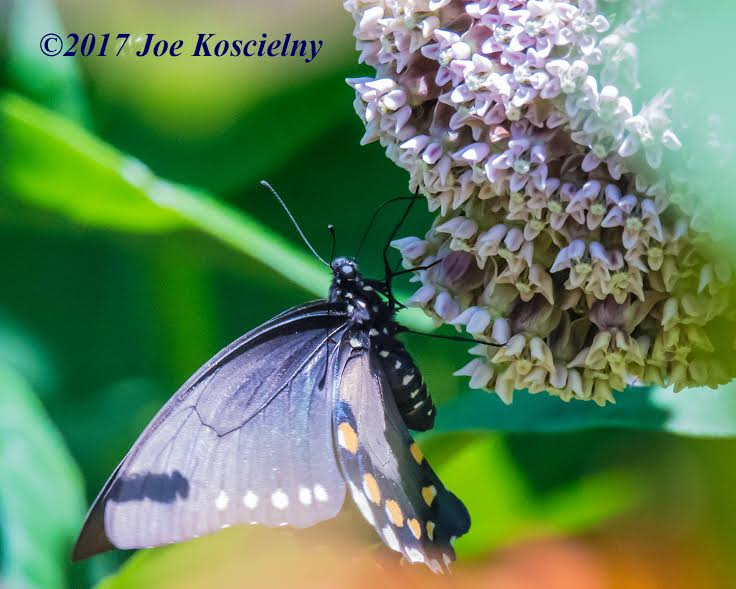Although one could argue that every native pant is perfect, that each one plays its own unique and intricate role in the eco-system, there is one that is the perfect example of how important our native plants truly are to our overall environment: The Spicebush.
Spicebush ( Lindera benzoin) is the textbook specimen of how native plants support our wildlife in ways that are impossible for the exotic non-natives plants that are introduced everyday in our home landscapes.
The Spicebush is dioeceous, which means there are male and female plants. Both get little yellow flowers before the leaves emerge that are important for early spring pollinators. This makes it a good replacement for forsythia, which is basically useless when it comes to wildlife. But it gets even better from here.
Spicebush is the host plant for the magnificent Spicebush Swallowtail Butterfly. The female butterfly lays its eggs on the leaves, the caterpillars eat the leaves and the next generation of this beautiful butterfly are on their way! But wait, we are not finished! It almost sounds like a too good to be true infomercial doesn’t it!
Now for the big one when it comes to our birds. The female Spicebush gets big red berries that are a critical food source for migratory birds in the fall. Spicebush berries are nearly 50 percent fat, making them the picture-perfect bird food when they need it the most.
Imagine how stressful and dangerous migration is for our birds. If a bird like the Wood Thrush flies into your backyard and it’s full of non-native invasive plants their journey might end for good right there. But if they find a Spicebush it could mean survival and the bird will have the energy to continue on its journey. It’s as simple as that.
Spicebush is primarily an understory shrub, which means it grows under the shady tree canopy. Common habitats in the wild are low woods, swamp edges and stream sides. At home keep it watered and good healthy soil and it will thrive. Spicebush flowers March-April and gest those important red berries from August-October .
Spicebush can grow in the home landscape in a wide range of light conditions. Although it does grow and reproduce under completely closed canopy, openings in the canopy will make it grow better and faster. This simply means it does better with some sun . We have introduced Spicebush to many of our native plant restoration projects around Bergen County in all kinds of habitats and it does well.
It is best to plant multiple shrubs as you will need both male and female plants to get berries. But unlike some plants the garden centers and nurseries do not indicate their sex. However, sometimes if you look close and are lucky you might find last year’s berry still hanging on the plant. Then you know you have a female.
And if for some reason you still need an excuse to plant a Spicebush or two or three it makes a wonderful tea also.
Spicebush can be found at the better local garden centers, native plant nurseries in South Jersey and even online sources .
Make no mistake: It is critical to the future of our migratory birds that we reintroduce native plants back into our landscapes. Urbanization has put our birds at great risk, and native plants can undo some of that damage.
In this Year of the Bird lets all dedicate a special place at home, at school, place of worship or business to give our birds a helping hand. They are all depending on us for their future.
To have your yard certified by Bergen County Audubon Society as a Certified Wildlife Garden go to http://www.bergencountyaudubon.org/cwg/
For more info on Spicebush go to https://www.wildflower.org/plants/result.php?id_plant=libe3
For more info on native plants for go to https://www.audubon.org/native-plants






Hi Don,
loving the articles about the importance of native plants. Looking forward to the next one.
Hi Don,
This is very informative and I’d like to purchase some and plant them in my garden. But I want a male and a female. Any suggestions for Bergen county nurseries that will know the difference?
Thanks!